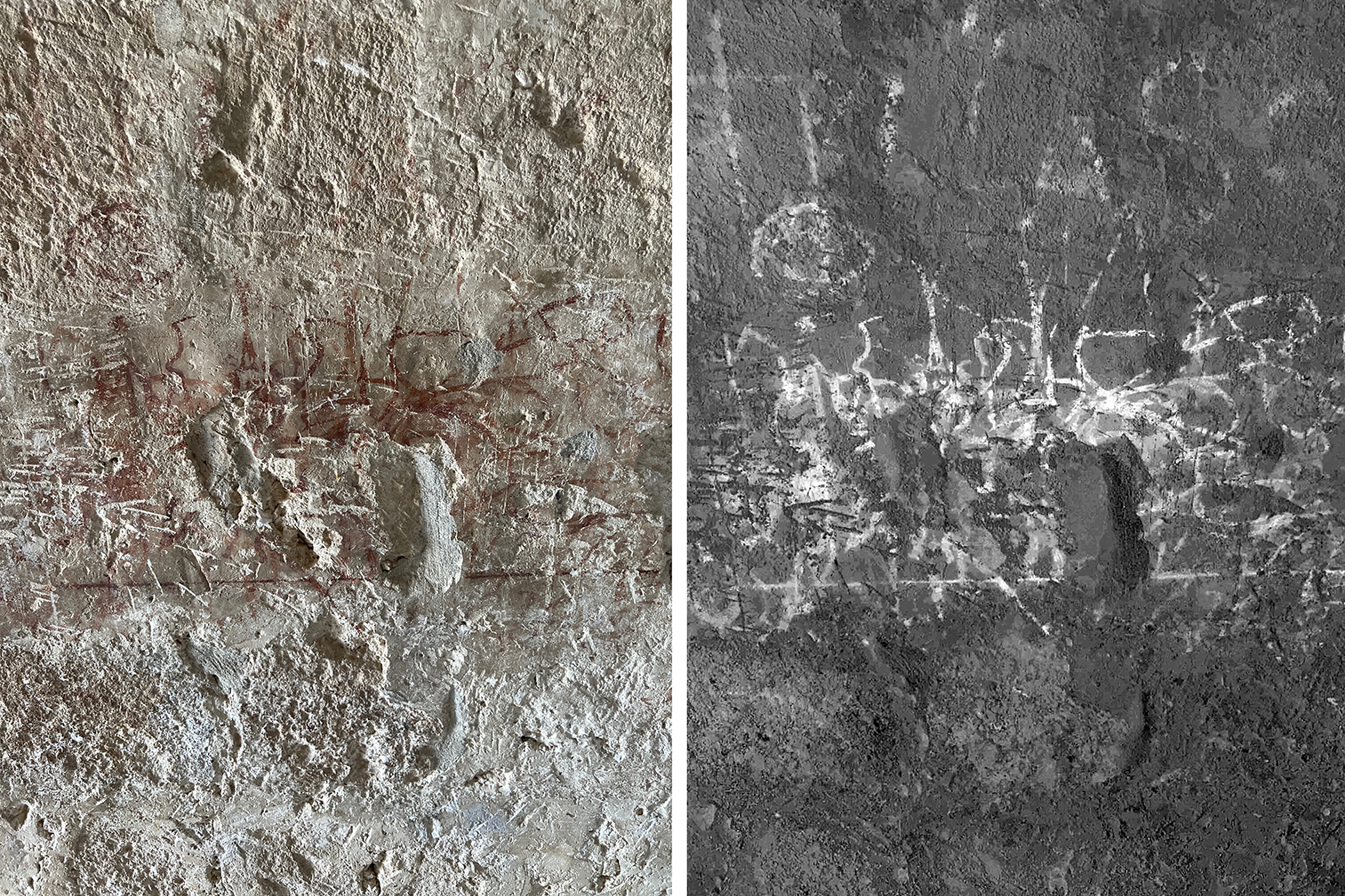DStretch
Decorrelation stretch is a technique commonly used in remote sensing and image processing that can also find applications in cultural heritage preservation and analysis. In cultural heritage, it can be particularly useful for enhancing the visibility of subtle details, revealing hidden features, and aiding in the interpretation of historical artifacts and sites. Here’s how decorrelation stretch can be applied in the context of cultural heritage:
1. **Enhancement of Faded or Obscured Details**: Historical artifacts and artworks may deteriorate over time, leading to fading or the accumulation of dirt and grime, which obscures finer details. Decorrelation stretch can help enhance contrast and reveal these obscured details by stretching the color space along the principal axes of variance, thereby emphasizing differences between pixels.
2. **Visualization of Subsurface Features**: In archaeological contexts, decorrelation stretch can be employed to visualize subsurface features non-invasively. By applying the technique to aerial or satellite imagery, subtle variations in soil composition or vegetation cover indicative of buried archaeological remains can be accentuated, aiding in the identification of potential excavation sites.
3. **Material Analysis and Classification**: Cultural heritage objects are often composed of various materials, each with unique spectral signatures. Decorrelation stretch can facilitate the discrimination and classification of different materials present in artifacts or architectural structures based on their spectral responses. This can be valuable for material identification, provenance studies, and conservation efforts.
4. **Detection of Pigment Variations**: Decorrelation stretch can reveal variations in pigments and surface coatings that may not be readily apparent in conventional imagery. By accentuating spectral differences, the technique can assist conservators and art historians in identifying changes in coloration, distinguishing original pigments from later additions or alterations, and assessing the overall condition of artworks.
5. **Identification of Weathering Patterns**: Weathering processes can leave distinctive patterns and textures on cultural heritage sites, such as erosion patterns on stone monuments or patina formation on metal artifacts. Decorrelation stretch can enhance the visibility of these patterns by exaggerating subtle spectral differences associated with weathering effects, aiding in the analysis of past environmental conditions and degradation mechanisms.
6. **Integration with Multispectral Imaging**: Decorrelation stretch can be combined with multispectral or hyperspectral imaging techniques to extract additional spectral information and further enhance the visualization of cultural heritage features. By exploiting complementary spectral bands, the technique can provide comprehensive insights into the composition, condition, and historical context of artifacts and sites.
Overall, decorrelation stretch offers a versatile approach for enhancing the visualization and analysis of cultural heritage materials and landscapes, contributing to the documentation, conservation, and interpretation of our shared cultural legacy.
Use of the Image J Dstretch technique to enhance the faint graffiti on the inner walls of Kolossi Castle, A former Crusader stronghold on the south-west edge of Kolossi village 14 kilometres (9 mi) west of the city of Limassol on the island of Cyprus
https://en.wikipedia.org/wiki/Kolossi_Castle
Photography: Moshe Caine

